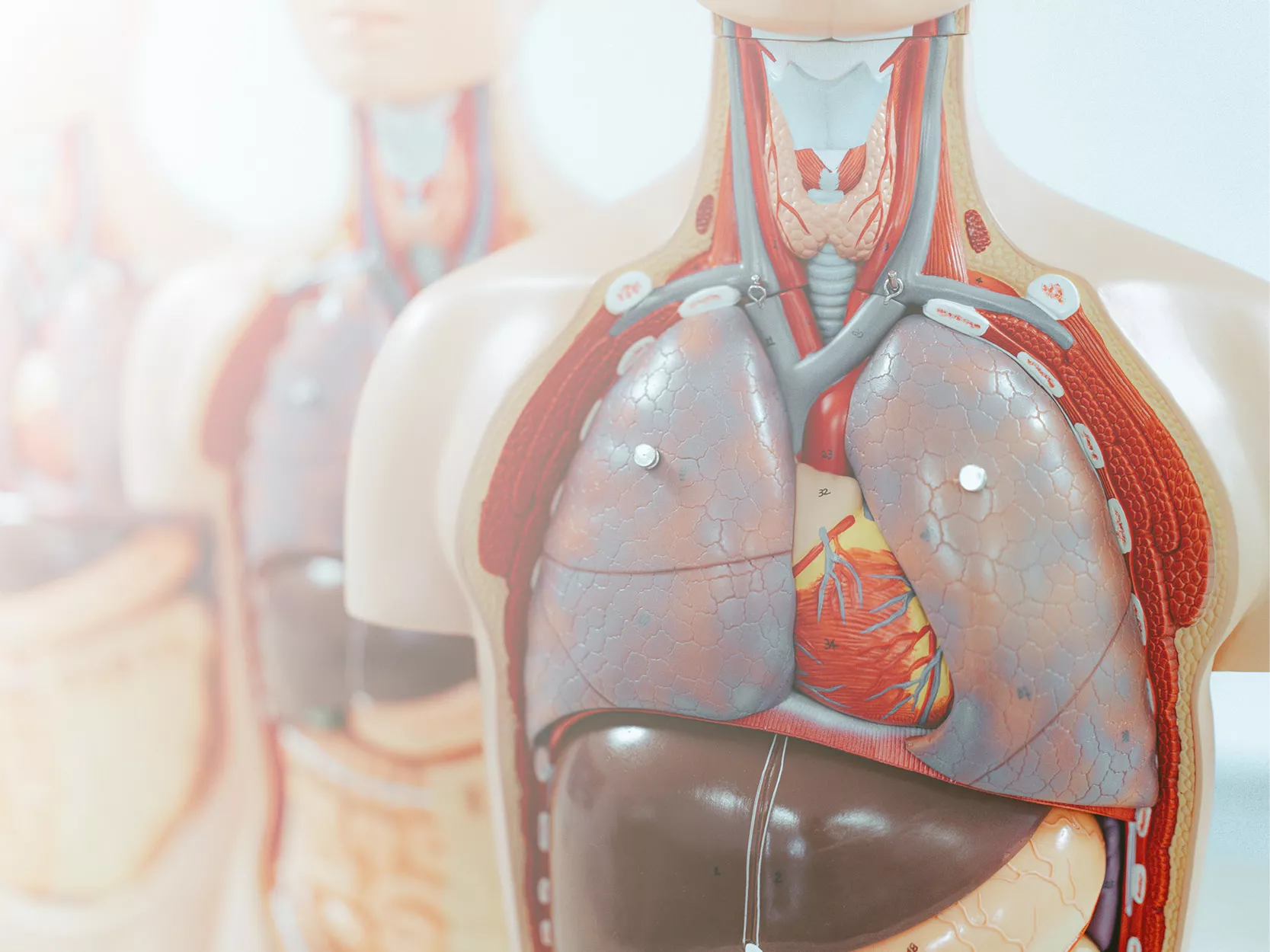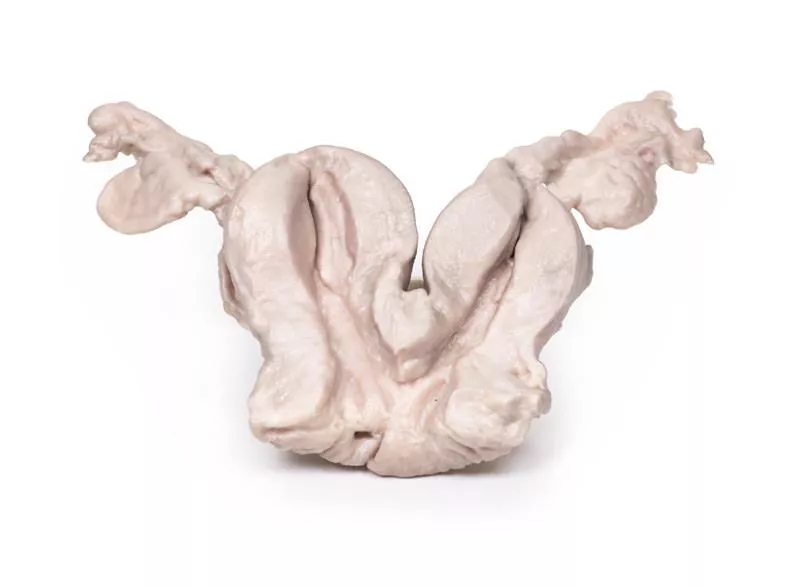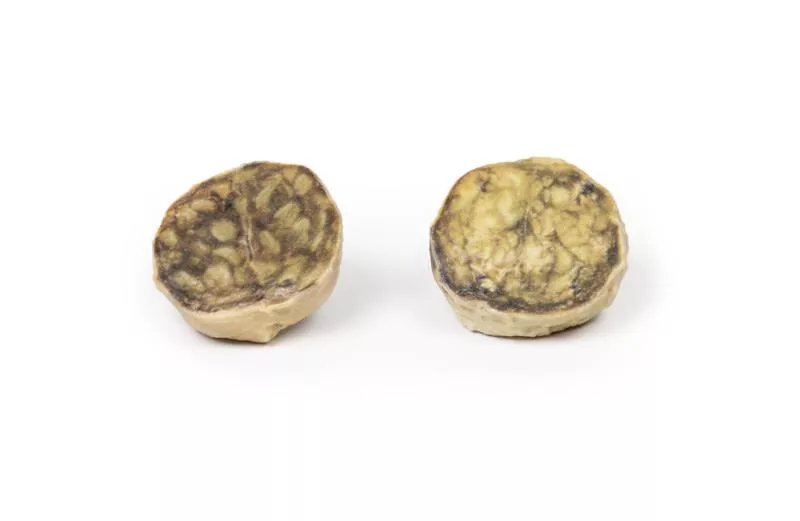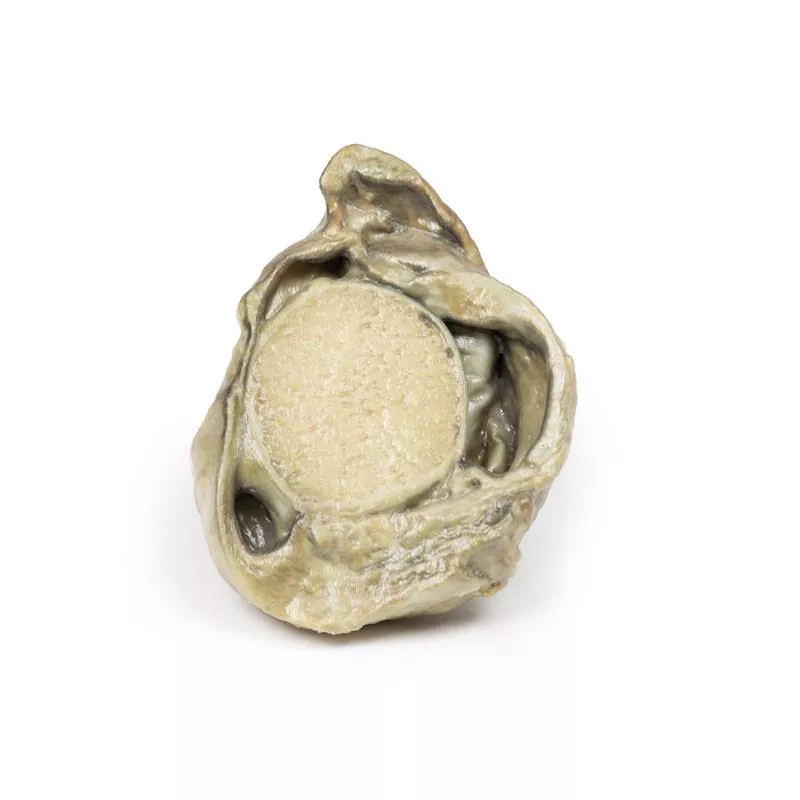Product information "Endometrial Carcinoma"
Clinical History
A 63-year-old woman presented with dull lower abdominal pain lasting two months and persistent heavy vaginal bleeding for one week, 13 years after menopause. Following a biopsy-confirmed diagnosis of endometrial carcinoma, she underwent radical abdominal hysterectomy and bilateral salpingo-oophorectomy as part of her treatment.
Pathology
The specimen includes uterus, fallopian tubes, and ovaries. The endometrial lining shows significant abnormalities, especially on the right side, where a brown polypoid tumour has invaded the myometrium and extended into the cervical canal. Histology confirmed a well-differentiated endometrial adenocarcinoma. The left ovary is enlarged and contains multiple large follicular cysts.
Further Information
Endometrial carcinoma is the most common gynecologic cancer in developed countries. It exists mainly in two types: endometrioid carcinoma (around 80% of cases), which often arises from atypical hyperplasia and presents early with better prognosis, and serous carcinoma, which is less common and more aggressive.
Common mutations include PTEN, PIK3Ca, ARID1A in endometrioid tumours and TP53 in serous types. Risk factors for endometrioid carcinoma include obesity, glucose intolerance, infertility, and unopposed estrogen exposure. Serous carcinoma typically affects older women with lower BMI and atrophic uterus. Women with Lynch Syndrome also have a significantly increased risk.
Post-menopausal bleeding is the most frequent symptom, allowing early detection. Some cases are asymptomatic or found incidentally. Imaging shows thickened endometrium on ultrasound or CT. Diagnosis is confirmed via biopsy, curettage or hysterectomy. Treatment depends on stage and includes surgery, radiotherapy and chemotherapy.
A 63-year-old woman presented with dull lower abdominal pain lasting two months and persistent heavy vaginal bleeding for one week, 13 years after menopause. Following a biopsy-confirmed diagnosis of endometrial carcinoma, she underwent radical abdominal hysterectomy and bilateral salpingo-oophorectomy as part of her treatment.
Pathology
The specimen includes uterus, fallopian tubes, and ovaries. The endometrial lining shows significant abnormalities, especially on the right side, where a brown polypoid tumour has invaded the myometrium and extended into the cervical canal. Histology confirmed a well-differentiated endometrial adenocarcinoma. The left ovary is enlarged and contains multiple large follicular cysts.
Further Information
Endometrial carcinoma is the most common gynecologic cancer in developed countries. It exists mainly in two types: endometrioid carcinoma (around 80% of cases), which often arises from atypical hyperplasia and presents early with better prognosis, and serous carcinoma, which is less common and more aggressive.
Common mutations include PTEN, PIK3Ca, ARID1A in endometrioid tumours and TP53 in serous types. Risk factors for endometrioid carcinoma include obesity, glucose intolerance, infertility, and unopposed estrogen exposure. Serous carcinoma typically affects older women with lower BMI and atrophic uterus. Women with Lynch Syndrome also have a significantly increased risk.
Post-menopausal bleeding is the most frequent symptom, allowing early detection. Some cases are asymptomatic or found incidentally. Imaging shows thickened endometrium on ultrasound or CT. Diagnosis is confirmed via biopsy, curettage or hysterectomy. Treatment depends on stage and includes surgery, radiotherapy and chemotherapy.
Erler-Zimmer
Erler-Zimmer GmbH & Co.KG
Hauptstrasse 27
77886 Lauf
Germany
info@erler-zimmer.de
Achtung! Medizinisches Ausbildungsmaterial, kein Spielzeug. Nicht geeignet für Personen unter 14 Jahren.
Attention! Medical training material, not a toy. Not suitable for persons under 14 years of age.






































